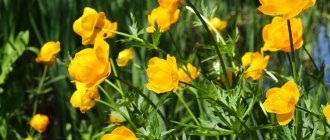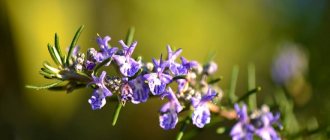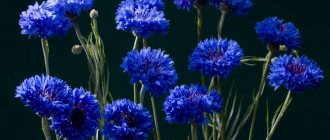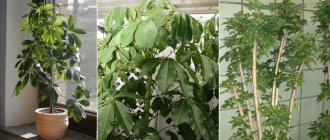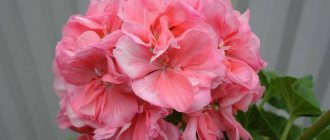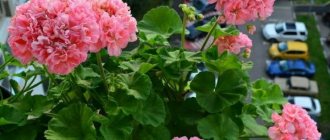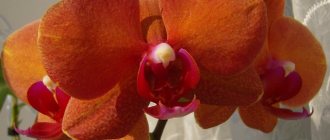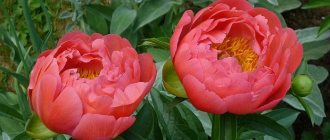Author: Elena N. https://floristics.info/ru/index.php?option=com_contact&view=contact&id=19 Category: Garden plants Published: June 18, 2018Last edits: November 04, 2020
- Growing conditions
- American Erythronium (Erythronium americanum = Erythronium angustatum = Erythronium bracteatum)
- Beneficial features
Kandyk, or erythronium (lat. Erythronium) is a genus of herbaceous perennials of the Liliaceae family, representatives of which grow naturally in the mountain forests of North America, Europe, Southern Siberia, Manchuria and Japan. Mention of this early spring ephemeroid can be found in the writings of Dioscorides. The Latin name for the genus was given by Carl Linnaeus, and it is derived from the Greek name of one of the species. And the word “kandyk” is of Turkic origin and is translated as “dog tooth.” Some species of erythronium (Caucasian, Japanese and Siberian kandyki) are considered endangered and are listed in the Red Book. In total, there are 29 species in the genus, and some of them are grown as cultivated plants.
Planting and caring for erythronium
- Flowering: for 2-3 weeks in April or May.
- Planting: both sowing seeds and planting bulbs in the ground occurs at the end of summer.
- Lighting: Kandyks that bloom in early April are grown in partial shade, and those that bloom in late April are grown in bright sun.
- Soil: light, moist, peaty and slightly acidic.
- Watering: only in May, if the spring is dry.
- Top dressing: it is enough to mulch the area with peat or leaf humus, but you can also apply mineral fertilizers once a season.
- Reproduction: seeds and children.
- Pests: mole crickets, moles and mice.
- Diseases: practically not affected.
- Properties: the plant is one of the best honey plants. Kandyk honey has healing properties.
Read more about growing erythronium below.
Notes
- For the conventionality of indicating the class of monocots as a superior taxon for the group of plants described in this article, see.
- Cherepnin, L. M.
Flora of the southern part of the Krasnoyarsk Territory. - Krasnoyarsk, 1959. - V. 2. - P. 1-240. - Stepanov, N.V. et al.
Red Book of the Krasnoyarsk Territory: plants and mushrooms. - Krasnoyarsk: Polikom, 2005. - 368 p. - Stepanov, N.V. et al.
Florogenetic analysis (using the example of the northeastern part of the Western Sayan). Key for identifying families and synopsis of flora. - Krasnoyarsk: Publishing house Krasnoyarsk. state Univ., 1994. - V. 1. - P. 1-108. - Stepanov, N.V.
Stories about Ergakov plants. - Krasnoyarsk: Raster, 2010. - 144 p. - ↑ Stepanov, N.V., Stasova, V.V.
About a new taxon of the genus Kandyk (Erythronium - Liliaceae) from the Western Sayan //
Bulletin of KrasGAU.
- 2011. - No. 8. - P. 58-63. - Skakunov, G.V.
Precious herbs. — Kemerovo: Kemerovo. book publishing house, 1985. - 157 p. - Luchnik, Z.I.
Ornamental plants of the Altai Mountains. - M.: Selkhozgiz, 1951. - Ruksans, J.
Buried Treasures: Finding and Growing the World's Choicest Bulbs. - Timber Press, Inc., 2007. - 460 p. — ISBN 0-88192-818-6. - Stepanov N.V.
Kandyk - a flower with blood // Ergaki Bulletin - the pearl of the Sayan Mountains. 2011. No. 9 (39). S. 5. - Stepanov N.V. et al.
Red Book of the Krasnoyarsk Territory: plants and mushrooms. - Krasnoyarsk: Siberian Federal University Publishing House, 2012. - 576 p. - Yange E.
Trans // Day and Night. Literary magazine for family and reading. - No. 4. - 2013. - P. 64-102.
All about the rose moody blues: growing, planting and caring for moody blues in the garden
Botanical description
Kandyki reach a height of 10-30, rarely 60 cm. Their bulbs are annual, ovoid-cylindrical in shape. A pair of opposite, petiolate, elongated lanceolate leaves, sometimes solid green, but often mottled with brown spots, is located at the base of the peduncle, on which a flower is formed with a large, drooping perianth, consisting of 6 yellow, white or pinkish-purple leaves. Sometimes there may be several flowers on an arrow. Flowering begins in late April or early May. The fruit of erythronium is an egg-shaped capsule with a small number of seeds.
How does a flower reproduce?
Kandyk is bred with seeds or babies. In the first case, all American varieties can be propagated, except for the multi-stalked erythronium. Seed collection begins in June, but only after the capsules are fully formed. Their contents should be on the surface of the plot.
According to experienced gardeners, slightly unripe specimens are cut off and then placed for ripening in a ventilated place with low humidity. Sow seeds or bulbs in the last days of summer.
Planting erythronium in open ground
When to plant
Kandyki, which bloom in early April, are best grown in partial shade on the north side of the garden, under the lacy crowns of trees and bushes. Since flowering of erythronium begins even before leaves appear on trees and shrubs, there will be enough light for the plant at the beginning of active growth. Erythronium species that bloom at the end of April are best planted in an area well lit by the sun. In this way you will slightly delay the onset of flowering of early species of erythronium and at the same time speed up the appearance of flowers in later species.
In the photo: Growing erythronium in the garden
Kandyk prefers soils that are light, peaty, acidic and moist, with approximately the following composition: coarse sand, leaf soil and humus. A couple of weeks before planting, 100 g of crushed chalk, 200 g of bone meal, 150 g of superphosphate and 30 g of potassium nitrate are added to each m² of plot.
- Reproduction of boxwood in the fall - how to properly separate a cutting and where to plant it so that it takes root successfully
How to grow hazel grouse - secrets of success
Erythronium is propagated by both seeds and offspring. All American species, with the exception of the multi-stemmed candyk, are propagated only by seeds, which are collected in June.
It is important not to miss the moment when the ripe boxes begin to open, because the seeds will simply fall to the ground and will be carried away by ants or pecked by birds.
It is better to remove the boxes a little earlier and ripen the seed in a dry room with good ventilation.
Both sowing seeds and planting erythronium bulbs in the ground are done at the end of summer.
How to plant
Ripe erythronium seeds are placed at a distance of 5 cm from each other in grooves 3 cm deep, located at a distance of 10 cm from each other, after which the grooves are sealed and watered. For the winter, the area with crops is covered only if there is a very cold winter ahead without snow. The shoots will appear in the spring, and by the end of April they should reach a height of at least 4 cm. If the shoots are lower by this time, it means that the erythronium lacks moisture or nutrition.
During the first season, plants form bulbs measuring about 4 mm, during the second season the bulbs grow up to 7 mm, and during the third they acquire a cylindrical shape, are buried independently in the soil by 7-10 cm and increase in diameter to 8 mm. Plants grown from seeds bloom in the fourth or fifth year after germination. If you decide to sow erythronium in the spring, then the seeds must first be stratified for 2-3 months in the vegetable drawer of the refrigerator, placing them in a plastic bag with wet sand or peat.
If you grow erythronium from bulbs, then each species has its own requirements for this procedure: European-Asian varieties are immersed 10-15 cm, maintaining a distance of at least 15 cm between the bulbs, and American species are buried 16-20 cm, keeping between them of the same interval. After planting, the area is mulched and watered.
Habitats
Kandyk is widespread and occurs from the temperate zone to the subtropical zone. Beautiful species are bred in North America. The flower loves shady and open corners, grows:
- In humid forests;
- In mountain tundras;
- In alpine meadows;
According to the classification, about 25 species are known. Only 4 grow in Eurasia, and about 20 varieties are collected in North America. Divided into 2 groups:
- Eurasian;
- American.
The advantages of erythronium are frost resistance, endurance to temperature changes, unpretentiousness, strong immunity to pathogens. Reproduction is carried out vegetatively - by bulbs and also by seeds.
Caring for erythronium in the garden
Growing conditions
Planting and caring for erythronium is simple and not labor-intensive. The plant almost does not need watering, and if the area is mulched, then loosening and removing weeds will also be necessary infrequently.
Watering and fertilizing
In early spring, when the active growth of kandyk begins, the soil is usually saturated with melt water, so the plant may need moisture only in May and if the spring turns out to be dry.
From time to time, after rain or watering, you should lightly loosen the soil around the plants and remove weed seedlings.
As for fertilizing, for the first season the plant will have enough fertilizer applied to the soil during planting or sowing, and then simply mulch the area with organic material - peat or leaf humus. Erythronium also responds well to mineral fertilizers for ornamental flowering plants.
In the photo: Growing kandyk in the ground
Transplantation and propagation
Once every 4-5 years, you should dig up and replant kandyk bulbs that have turned into nests over such a period of time. Simultaneously with the transplantation, erythronium is propagated by dividing the bulb. It is better to do this in the second half of summer, in July or even in August, when the plants are dormant. By this time, the erythronium foliage should have already turned yellow, and the bulbs should have regained their strength after flowering.
The children are separated from the dug up bulbs and, having treated the fracture sites with coal powder, the planting material is quickly planted in the furrows prepared in advance in the manner described earlier. It is impossible to keep the bulbs in the air for a long time, since they do not have covering scales and immediately begin to dry. If there is a need to store planting material, then place the bulbs in a box with damp sand, sphagnum or peat.
- What preparations do we necessarily use to treat seedlings to prevent diseases?
We already told you how to propagate erythronium by seed at the beginning of the article.
Erythronium in winter
The cold resistance of erythronium allows it to spend the winter in open ground, however, in very severe frosts or snowless winters, the area must be covered with a thick layer of dry leaves or spruce branches. Remove the cover in early spring, when the snow melts.
Reproduction
Usually uses two methods of propagation of erythronium - bulbous and seed. The most commonly used method is the bulbous method. This method is considered the simplest and is not difficult. In mid-summer, when the plant enters its dormant period, young bulbs are separated from the plant and planted in moist soil.
The most important thing during the separation process is not to damage the bulbs. Do this as carefully as possible. Be sure to use a sharp and clean tool. Bulbs require systematic watering. No special care required.
The seed propagation method is rarely used. Most often for certain types of plants. It is necessary to sow a large number of seeds because most of them are eaten by insects. Seeds are planted in early summer. The distance between the seeds is about 10 centimeters. Be sure to remember where future plants were planted. Only next year the seeds will germinate. And erythronium will begin to bloom in 5 years.
Pests and diseases
Erythronium is resistant to diseases, and its main enemies are mole crickets and rodents - moles and mice. To avoid the death of all erythroniums, it is advisable to plant them in different places in the garden. In pest control, traps are used: for mice and moles - baits with poison, and for mole crickets, holes are dug and fresh manure is placed there, into which insects will certainly crawl to lay eggs. Traps for mole crickets are covered with pieces of board or slate, and when a decent number of pests have collected in them, you can begin to destroy them.
Location
Let's start growing kandyk by choosing a place for planting, based on the preferences of the bulbous plant, as well as paying attention to the natural habitat
Site selection
Our flower is not demanding of light; on the contrary, it prefers shaded areas. Sometimes it is very difficult to find a plant that can be planted on the north side, under the canopy of large trees. So, this is an ideal place for a kandyk.
When choosing a site, you need to pay attention to soil moisture and topography. The place must be level
The low-lying areas must be discarded immediately, as the flower does not tolerate stagnant water.
Important! Kandyk blooms before the trees have a dense foliage crown, so there is no need to worry about a lack of light.
Soil selection
The ideal option would be light, moist soil with a lot of peat. It is also worth making sure that the substrate is acidic or slightly acidic, but not alkaline or neutral.
It is worth noting that kandyk equally poorly tolerates both stagnation of moisture and severe drying out of the soil, which is directly related to the natural growing conditions.
To prepare the soil mixture, we need three components: leaf soil, humus and coarse river sand. In order for the plant to quickly grow and bloom beautifully, 150 g of superphosphate, 30 g of potassium nitrate, 200 g of bone meal and 100 g of ground chalk are added to one square of soil.
You can purchase complex fertilizer at a flower shop, but you should consult with the seller so that the dosage of the main components is suitable for the kandyk.
Did you know? The alcoholic drink abyrtka is prepared from kandyk bulbs, which previously replaced beer at Tatar holidays.
Landing in the ground
Kandyk, as stated in the description, is a bulbous plant, so we will plant bulbs rather than seeds in order to simplify the process and improve survival rate.
Depending on weather conditions, planting should be done in June, preferably in the second half. Kandyk is planted in groups of 3-4 pieces in accordance with the requirements described above (the place should be shaded).
Slight difficulties arise when choosing a planting depth, since species native to America and Europe are planted at different depths. For this reason, when purchasing planting material, find out the exact name of the species, otherwise the plant may not be accepted.
European and Asian species, as well as those that grow in Russia, are planted to a depth of 10-15 cm, maintaining a distance between plants of 15 cm. American species are planted to a depth of 16-20 cm, maintaining the distance described above.
Important! The bulbs do not have a protective layer, so they can remain outside the substrate for no more than 24 hours. For storage, use wet sawdust or moss to extend the shelf life up to 20 days
mulchpeatagrofibre
It is worth remembering that a perennial grows in one place for no more than 6 years, after which it is necessary to separate the daughter bulbs that form on the main one and transplant it to another place.
Types and varieties of kandyk
Some types of erythronium are more popular in cultivation than others, and we will introduce you to the most commonly found plants of this genus in gardens.
American Erythronium (Erythronium americanum = Erythronium angustatum = Erythronium bracteatum)
It grows in the subtropical and warm-temperate zones of the central and eastern regions of Canada and the United States of America, rising in the mountains to heights of up to 1500 m above sea level. It has an ovoid bulb, oblong or lanceolate leaves covered with brown spots up to 20 cm long and up to 5 cm wide and a peduncle up to 30 cm high. The tepals of this species are painted bright yellow, sometimes with a purple tint.
In the photo: American Erythronium (Erythronium americanum = Erythronium angustatum = Erythronium bracteatum)
Erythronium albidum
It grows in the central regions of the USA and Canada and resembles Erythronium americana. The tepals of this species do not have lobes at the base and may be white or tinted pink, blue or purple.
In the photo: Erythronium albidum
Erythronium multiscapoideum = Erythronium hartwegii
Grows on damp rocks and light forests in the warm temperate and subtropical zones of the southwestern United States. It has an ovoid oblong bulb, at the base of which stolons are formed. The oblanceolate leaves are mottled and the creamy yellow flowers with an orange base that turns pink when withered are borne on long stalks. There can be from 1 to 3 flowers on one peduncle.
In the photo: Erythronium multiscapoideum = Erythronium hartwegii
Erythronium hendersonii
Native to the dry meadows and light forests of Oregon, it was introduced to Europe in 1887. It has an oblong bulb on a short rhizome, leaves with dark brown spots and a stem 10 to 30 cm high, on which 1 to 3 light purple flowers are formed with an almost black base and purple stamens with light brown anthers.
In the photo: Erythronium hendersonii
Mountain Erythronium (Erythronium montanum)
Grows in alpine meadows of the northwestern United States. It has a narrow, oblong bulb, a stem up to 45 cm high, oblong-ovate leaves on winged petioles, sharply narrowed towards the base. The arrow may have one or more white or pinkish flowers with an orange base of bract leaves.
In the photo: Mountain Erythronium (Erythronium montanum)
Lemon yellow candyk (Erythronium citrinum)
Grows in montane forests in the warm temperate climate of the Western United States. It has blunt, spotted broadly lanceolate and short-petioled leaves with a short sharp apex and a stem 10-20 cm high, on which there can be from 1 to 9 lemon-yellow flowers with strongly reflexed tepals, the bases of which are colored orange, and the tips to the end the blooms take on a pink tint.
In the photo: Lemon yellow Kandyk (Erythronium citrinum)
Erythronium californicum
Can be found in light forests of California. It has blunt, oblong, spotted leaves up to 10 cm long on a winged petiole and a stem up to 35 cm high with one or more flowers. The creamy white tepals have an orange base. The plant has a garden form with two-color - creamy yellow and white - flowers. The most popular hybrids of the species are:
- White Beauty is a plant with large snow-white flowers with a dark brown ring in the middle. The tepals curl up to form a Chinese pagoda shape;
- Harvington Snowgoose is a variety with large flowers with cream tepals, lemon yellow at the base.
In the photo: Erythronium californicum
Large Kandyk (Erythronium grandiflorum)
grows in forests and on mountain slopes in the steppe regions of Canada and the USA. Its bulb is located on a short rhizome, the stem reaches a height of 30 to 60 cm, and solid green oblong-lanceolate leaves up to 20 cm long smoothly turn into a short petiole. From one to six flowers can form on the stem with golden-yellow tepals with a lighter base. The species has several varieties and varieties:
- large-flowered white - kandyk with snow-white flowers;
- large-flowered golden - a plant with yellow anthers;
- large-flowered Nuttalla - kandyk with red anthers;
- large-flowered pale - a variety with white anthers;
- Biyanka - a variety with white flowers;
- Rubens - kandyk with red-pink flowers.
In the photo: Large Kandyk (Erythronium grandiflorum)
Erythronium oregonum
or Erythronium revolutum is distributed in the nemoral region and subtropical zone of the Pacific coast of the United States of America and Canada . The stem of this plant is from 10 to 40 cm high, the leaves are oblong-lanceolate, tapering to the petioles, and spotted. The tightly curled, creamy white tepals turn yellow at the base and turn purple towards the end of flowering. The anthers of the flowers are white. This species is more moisture-loving than others and has several popular forms:
- inverted white-flowered - a variety with white flowers with a slightly greenish tint and a brown base of the perianth leaves;
- Johnson's wrapped - a form with dark pink flowers and shiny green leaves with brown spots;
- wrapped early is a variety with creamy white flowers with an orange base and green leaves spotted with mahogany.
In the photo: Erythronium oregonum
Erythronium tuolumnense
grows in the foothills of the Sierra Nevada. This kandyk reaches a height of 30-40 cm. It has single-colored green lanceolate or oblanceolate leaves up to 30 cm long, located on the stem on long petioles. The stem also bears one or more golden-yellow flowers with a greenish-yellow base. The most famous varieties:
- How to plant and care for floribunda roses
- Pagoda is a variety with lemon-yellow flowers;
- Congo is a hybrid of Tuolumnia and avertum with sulfur-yellow flowers, a brown ring on the inside of the perianth and reddish-brown veins on the leaves.
In the photo: Erythronium tuolumnense
Siberian Erythronium (Erythronium sibiricum = Erythronium dens-canis var. sibiricum)
native to Mongolia and Southern Siberia, where it grows along the edges of mixed and coniferous forests of the Sayan and Altai. This species has a very fragile white ovoid-cylindrical bulb, the shape and color of a dog's fang, and a stem 12 to 35 cm high with two opposite green leaves, elliptical and pointed at the apex, covered with a red-brown marbled pattern. At the end of the stem, a drooping flower with a diameter of up to 8 cm is formed with lilac-pink or white tepals bent to the sides. The base of the leaves is light yellow with small dark specks. The anthers of the flower are golden yellow, the pistil is white. There are varieties with almost brown or brown leaves with a narrow green border, but over time the pattern on the foliage disappears.
In the photo: Siberian Erythronium (Erythronium sibiricum = Erythronium dens-canis var. sibiricum)
Erythronium caucasicum
is endemic to Western Transcaucasia, where it grows in mountain forests. It has an ovate-cylindrical or oblong bulb, a stem up to 25 cm high and bluish, spotted ovate-oblong leaves on stem-encompassing petioles. The white or light yellow tepals at the base are orange-purple on the outside and yellowish on the inside. This species is not cold-resistant and requires shelter for the winter.
In the photo: Caucasian Erythronium (Erythronium caucasicum)
European Erythronium (Erythronium dens-canis)
or dog's tooth (Erythronium maculatum) grows in deciduous mountain forests and shrubs in the subtropics and warm-temperate zones of Europe, including in the western regions of Ukraine, and in the Alps it rises to a height of up to 1700 meters above sea level. Its bulb also resembles a dog’s fang in shape and color, the pinkish stem reaches a height of 10 to 30 cm, and the broadly lanceolate green leaves tapered to a grooved petiole, located at the base of the stem, are covered with purple spots. A single drooping flower with lanceolate, pointed, pink or purple, rarely white tepals, bent back, blooms on the stem. The short stamens of the flower have bluish, almost black anthers. This highly decorative winter-hardy species has been in cultivation since 1570. Erythronium europaea has a variety with snow-white flowers (var. niveum) and a long-leaved form with larger flowers than the main species and long pointed leaves (var. longifolium). The most popular varieties are:
- Charmer is a variation bred by Thunbergen in 1960 with a large brown spot at the base of the flowers. The perianth is lavender in color. Leaves have brown markings;
- Frans Halls - the perianth of this variety is uniformly purple on the outside, and decorated with bronze-green spots on the inside. The middle of the flower is yellowish-green;
- Lilac Wonder - this cultivar has purple flowers with a chocolate-colored ring at the base of the perianth leaves on the inside and a brown ring on the outside;
- Pink Perfection is an early flowering variety with a bright pink perianth;
- Snowflake - garden form with snow-white flowers;
- Rose Queen is a rare and very beautiful variety with pink flowers;
- White Splendor is a variety bred by Tubergen in 1961 with white flowers with a red-brown spot at the base of the perianth leaves.
In the photo: European Erythronium (Erythronium dens-canis)
Japanese Erythronium (Erythronium japonicum)
grows on Sakhalin, the Kuril Islands, Japan and Korea. The species is highly decorative. Its bulb is cylindrical, lanceolate, the stem is up to 30 cm high, the leaves are petiolate, oblong, narrow, up to 12 cm long. One drooping pink-purple flower is formed on the stem.
In the photo: Japanese Erythronium (Erythronium japonicum)
Erythronium hybridum
combines varieties formed by crossing different species and varieties of erythronium. The best ones:
- White Tsar is a plant with snow-white flowers with a lemon center and a barely noticeable dotted border of a reddish hue. Leaves are bright green;
- Scarlet is a variety with bright crimson flowers with a white ring, inside of which there is a ring of crimson dots. The center of the flower is yellowish, the leaves are brown with green dots, and green at the ends;
- White fang - kandyk with white flowers up to 6 cm in diameter with a yellowish center and green leaves and peduncle:
- Harmony - flowers up to 8 cm in diameter: the leaves are pink at the ends and white closer to the base, the center is light yellow in color and edged with red dots. Young green leaves are covered with a brown pattern, but this disappears with age;
- Olga is a variety with lilac-pink flowers with dark pink dots and a white edging at the ends of the lobes. The leaves are brownish-green with a green stripe along the edge.
Taxonomic structure
Fruiting Siberian Kandyk. Khakassia, Kuznetsk Alatau.
Siberian kandyk is characterized by significant variability. Its local populations are heterogeneous and you can often find noticeably different plants nearby: with single-colored and variegated leaves, flowers of various shades of lilac-pink color and size. Many plants, as the most decorative, were introduced into cultivation, and special varieties were bred on their basis. Thus, significant work with Siberian kandyk in Altai was carried out by Z. I. Luchnik (1951). G.V. Skakunov also developed several varieties of kandyk with large and brightly colored flowers and different flowering periods:
- 'White Tsar'. Early variety, flowering from April 12 to April 22. The flowers are pure white with a lemon center edged with subtle reddish dots. Towards the end, the flowers acquire a turban-like shape. The leaves are bright green.
- 'White Fang'. Blooms from April 23 to April 30. The flowers are pure white with a yellowish center, 6 cm in diameter. The peduncle and leaves are green.
- 'Olga'. Blooms from April 26 to May 6. The flowers are lilac-pink, covered with dark pink dots, with white edging of the lobes. The leaves are brown-green with a green stripe along the edge. There are other varieties.
Based on expedition materials, plant breeder Janis Rukshans described two subspecies from Tuva and Gorny Altai: subsp. altaicum
(from Tuva, with white flowers, resembling Caucasian kandyk in appearance) and subsp.
sulevii
(Altai Mountains, with lilac flowers and purple anthers, similar in appearance to Japanese candyk).
Synonyms
According to The Plant List, the synonymy of the species includes:
- Erythronium altaicum Besser ex Baker, nom. inval.
- Erythronium dens-canis var. parviflorum Regel
- Erythronium dens-canis var. sibiricum Fisch. & CAMey.
- Erythronium sibiricum subsp. altaicum Rukšāns
- Erythronium sibiricum subsp. sulevii Rukšāns
Properties of kandyk - harm and benefit
Beneficial features
Kandyk is an excellent honey plant. Its nectar contains fructose, glucose, minerals, enzymes, acids, vitamin E and other substances beneficial to the human body. Kandyk honey has a delicate aroma and valuable healing properties, since it contains not only vitamins and enzymes, but also emollients. Kandyk honey is used to treat cough, fever, and reduce temperature. Honey is used in cosmetology to produce antiseptic honey water that does not dry out the skin.
Erythronium bulbs, which contain antispasmodics and higher alcohols, are also widely used in folk medicine. Fresh kandyk bulbs are a remedy for preventing seizures, including epilepsy.
Kondak leaves have a general strengthening effect, prevent the aging process and are used to prevent impotence in men. In addition, they are rich in enzymes, dietary fiber, minerals and vitamins. The leaves are eaten fresh and pickled. And rinse your hair with a decoction of kandyka herb to strengthen the hair follicles.
Contraindications
Erythronium pollen can cause hay fever in people predisposed to allergic reactions: if after a walk in the garden where erythroniums grow, you suddenly develop a runny nose, swollen sinuses, or a rash, consult a doctor immediately.
Problems can also arise if you overeat kandyk honey: this product increases appetite and blood sugar levels. Erythronium honey is contraindicated for diabetics and people sensitive to glucose.
Eating honey or parts of kandyk can lead to hypervitaminosis, especially if you simultaneously take pharmacy multivitamins or dietary supplements containing vitamins. Even if you are absolutely healthy and are planning to take kandyk as a general tonic, consult a doctor first.
Transfer
Kandyk grows excellently in one place for 4-6 years. Only after this period has passed can seating be carried out. Over 5 years, up to 20 daughter bulbs are formed on the mother bulb. They are not disconnected or disturbed during this entire period. The separation is carried out only after 5-6 years. It is better to carry out this procedure after 8-10 years.
The bulbs are planted within the first day after separation. They cannot be stored for a long time. They completely lack protective scales. If preservation is intended, it is necessary to place the bulbs in damp moss or sawdust. In this form you can store up to 3 weeks.
1.Seven secrets of success:
| 1. How and when to plant: they are planted in open ground in the summer months, when the flower is in a dormant period. |
| 2. Transplantation: nests of kandyk bulbs are replanted after flowering, but before the leaf blades die. |
| 3. Soil: organically rich, moisture- and breathable organic-based substrate with an acidic pH. |
| 4. Flowering time: in the middle zone it blooms during spring - in April - May. |
| 5. Beneficial properties: plant honey contains a huge amount of useful substances, but people prone to allergies should not consume it. |
| 6. Feeding: limited feeding during the period of growth and bud formation. |
| 7. Reproduction: Kandyk is propagated by separating daughter bulbs; it is also possible to grow from seeds. |
Botanical name: Erythronium.
Family. Liliaceae.
Origin, where it grows. America, Caucasus, Altai, Japan, China, Mongolia. In its natural habitat, the kandyk can be found under the forest canopy, in alpine meadows, and often in the highlands.
Description - what it looks like. Kandyk are perennial flowering bulbous plants that bloom buds mainly in early spring. Currently, the genus includes about 29 plant species. Translated from the Turkic language, “kandyk” means “dog tooth”. The second name of the flower is “mountain tulip” given for its early flowering and habitat.
Under the ground, the plants have small elongated bulbs consisting of large scales. It is interesting that each bulb bears traces of previous years - the bottom of last year's bulbs.
In early spring, immediately after the snow melts, the flower forms a small stem on which are located large, narrowly lanceolate leaves, arranged oppositely, in pairs. The length of the leaf blades reaches 8–12 cm.
The color of the leaf blades is extremely interesting - almost every variety of kandyk has spotted leaves with spots of different shapes and colors. The leaf venation is arcuate.
At the top of the stem there is a slightly drooping peduncle with a single small bud. Some varieties are capable of forming 2–4 buds on one peduncle.
The flowers resemble cyclamen - they have long petals bent back. Interestingly, in bad weather, such as rain, the petals droop and protect the pollen from being washed away. After flowering, the plants form small seed pods, and in the second half of summer, a couple of weeks after the seeds ripen, the entire above-ground part of the flower may die off.
Unfortunately, human industrial activity, the collection and sale of flowers and bulbs, as well as deforestation have led to the fact that species such as Siberian, Caucasian and Japanese kandyk are currently included in the Red Book.
